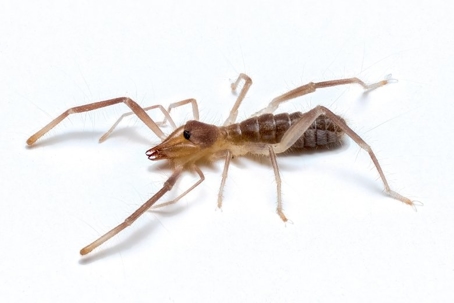Can Camel Spiders Bite?
Yes, camel spiders can bite. They’re not venomous, but they have strong, scissor-like mouthparts designed to tear prey, and those jaws can deliver a very painful mechanical bite if the animal feels trapped or threatened.
Do Camel Spiders Bite?
Camel spiders are most likely to bite only when they feel cornered or physically threatened, because they have no venom and no interest in attacking people or pets. Most bites happen when someone accidentally traps one against their skin while moving boxes, lifting outdoor items, handling yard debris, or putting on shoes or clothing left on the ground. They can also bite if a person tries to pick one up, brush it away, or restrain it. Inside garages, sheds, and storage areas, bites often occur during nighttime activity when these fast-moving predators are startled and have no escape path. Pets, especially curious dogs and cats, may provoke a defensive bite if they sniff, paw, or pin a camel spider. In every situation, the bite is a reflexive defense, not an attack—these arachnids rely on speed, not aggression, to stay safe.
Camel Spider Bites
Camel spider bites can be very painful, but the overall medical risk is low because they do not possess venom of any kind. Their jaws are powerful enough to tear through insect and small-animal tissue, so a defensive bite can break the skin, causing sharp pain, localized swelling, and a small laceration or puncture. The primary concern isn’t toxicity—it’s trauma to the skin and the possibility of infection. Dirt, debris, or bacteria introduced during the bite can lead to redness, warmth, swelling, and delayed healing if the wound isn’t cleaned properly. In rare cases, deeper bites may cause mild tissue bruising or irritation that lasts a few days. Serious complications are uncommon, and camel spiders are not capable of necrotic injury or systemic reactions. With proper cleaning and basic first aid, most bites heal without issue.
What Do Camel Spider Bites Look Like?
A camel spider bite typically appears as a small but sharp-looking break in the skin—often a single laceration or a pair of closely spaced puncture marks from the powerful “scissor” jaws. The area usually becomes red, tender, and slightly swollen within minutes. Because the bite is purely mechanical, the wound often resembles a minor cut or scrape rather than the blistering or spreading redness associated with venomous bites. In some cases, a thin scratch-like mark may be visible if the jaws tore rather than punctured. Over the next several hours, mild swelling and localized inflammation are common, but the bite should remain limited to the immediate area. Any expanding redness, increasing pain, warmth, or drainage after the first day usually points to secondary infection rather than an effect of the camel spider itself.
What To Do About Camel Spider Bites
If you’re bitten by a camel spider, the most important step is to treat it like a minor but potentially dirty wound. Start by washing the area thoroughly with soap and warm water to remove any debris the jaws may have introduced. After cleaning, apply an antiseptic and cover the bite with a clean bandage to protect it from irritation and contamination. Over the next 24–48 hours, monitor the site for signs of infection such as spreading redness, increasing pain, warmth, swelling, discharge, or red streaking. Because camel spiders carry no venom, the bite itself won’t cause systemic symptoms—so anything beyond localized discomfort usually indicates infection and deserves medical attention. If you experience significant swelling, persistent pain, fever, or any difficulty using the affected area, have a healthcare provider evaluate it. Avoid scratching, keep the area clean and dry, and replace the bandage daily until the skin has closed and healed.

